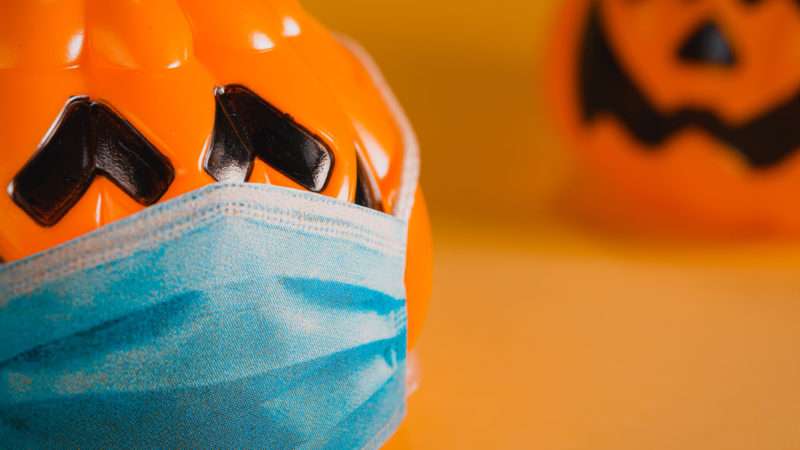
The Center for Disease Control (CDC) has published guidance for families on how to approach the coming fall holidays—and if the federal agency had its way, kids would suffer through a very un-fun Halloween.
“Many traditional Halloween activities can be high-risk for spreading viruses,” warns the CDC in information released on Monday. “There are several safer, alternative ways to participate in Halloween.”
The very safest activities, according to the CDC, are carving pumpkins with members of your own household, having scary-movie night, or throwing a “virtual Halloween costume contest.” (How fun.) Small, outdoor gatherings are classified as moderately risky, and the quintessential Halloween activity—door-to-door trick-or-treating—is considered “higher” risk:
Avoid these higher risk activities to help prevent the spread of the virus that causes COVID-19:
-
Participating in traditional trick-or-treating where treats are handed to children who go door to door
-
Having trunk-or-treat where treats are handed out from trunks of cars lined up in large parking lots
-
Attending crowded costume parties held indoors
-
Going to an indoor haunted house where people may be crowded together and screaming
-
Going on hayrides or tractor rides with people who are not in your household
-
Using alcohol or drugs, which can cloud judgement and increase risky behaviors
-
Traveling to a rural fall festival that is not in your community if you live in an area with community spread of COVID-19
Crowded, indoor costume parties and haunted houses are certainly higher risk activities, though other factors can reduce the danger—if the COVID-19 levels in the community are low, attendees are being tested, etc. Trick-or-treating, though, takes place outdoors. Can’t people just wear masks and hand out candy from their porches? Kids could approach in small groups, even incorporating mask-wearing into their own costumes wherever possible. This hardly seems more dangerous than attending a mass protest or a large public memorial for a beloved Supreme Court justice, but don’t expect the CDC to inveigh against any of those things.
Keep in mind that the agency just admitted on Friday that COVID-19 is primarily a respiratory disease spread through airborne particles rather than something you can pick up from touching a compromised surface. Most medical experts, and even vaguely informed citizens, have been aware of this for months. Who knows—maybe six months from now, long after the candy has gone stale, the CDC will revise its Halloween guidance, too.
Earlier this month, Los Angeles announced it would ban trick-or-treating entirely, but then relented and said the activity would merely be discouraged. Similarly, the CDC guidance is merely that: guidance. Hopefully, government health authorities will recognize the diminishing returns of sacrificing every beloved childhood tradition on the altar of extreme coronavirus risk-aversion, and instead give families tips about how they can trick-or-treat in relative safety, if they so choose.
from Latest – Reason.com https://ift.tt/2RPbLdV
via IFTTT